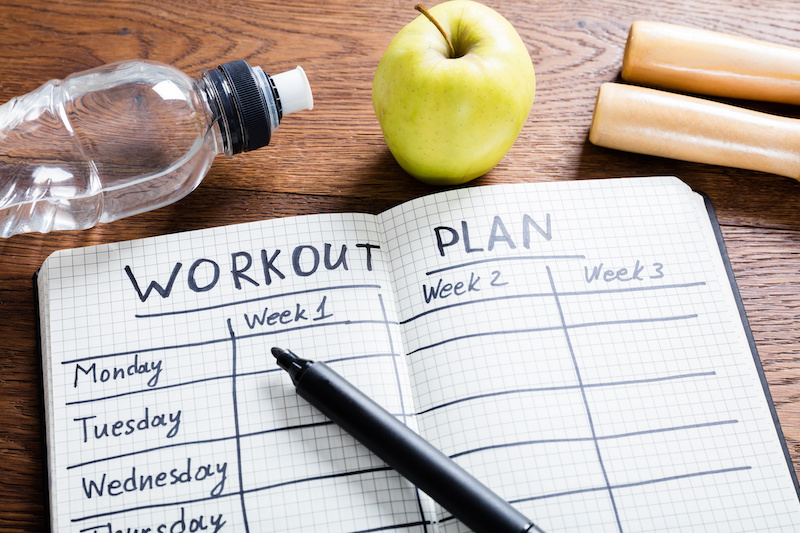Post Written By: Elsie Velazquez Cert. Personal Trainer /
Doubling up on your workouts with a morning and afternoon session can take results to the next level—if you use the right approach. Simply piling on another intense session after you leave the office when you did an equally challenging routine before work can lead to damaging amounts of muscle breakdown and other less-than-desirable results such as decreased metabolism and feeling totally depleted. Done properly, however, if you add an extra workout it can make all the difference in the world if you are just on the edge of seeing results.
Basics
- Vary the Intensity
Exercise stresses the systems of the body, which then requires recovery time to heal and become stronger than when you started. If you complete a tough a.m. workout and then hit it even harder in the evening, you will certainly wind up burned out—and possibly injured. And if you do cardio twice a day, you could break down muscle tissue, lowering your lean body mass and therefore your metabolism.
- Split Up Cardio and Strength
Dividing your cardio and weight workouts reduces your risk of overtraining by using different muscles and energy systems. It really does not matter which you do in the morning or evening as long as you get it done. .
- Wake Up with Cardio to Lose Weight
In my opinion, cardio—specifically high intensity interval training (HIIT)—may be better to do in the morning so that you can enjoy the ‘afterburn’ in which your metabolism is working on overdrive through-out the day. I also believe you’re less likely to become “revved up” after a workout if you do strength training at the end of the day versus cardio, which can keep you up at night.
- Switch Up Complex and Simple Moves
For twice-a-day strength training, complex movements—those involving more than one joint such as squats and lunges— should be done earlier in the day and simple exercises—using one joint like biceps curls and triceps extensions—at night. This reduces your chances of injury by not working muscles later in the day that are taxed from an earlier workout.
- Keep Sessions Short and Spaced Out
It is best not to exceed 45 minutes per workout. A shorter, more intense workout not only gives you better results, it is more realistic for your long-term goals of maintaining results. It is best to plan your sessions at least six to eight hours apart to give your body as much time as possible to recover before you go at it again.
- Include a warm-up and a cool-down
The warm-up and cool-down is especially important for the recovery period between workouts. This speeds up the removal of lactic acid and other metabolic by-products associated with weight training. Spending a few minutes stretching after the light aerobic activity will also help speed up this process. Clearly the warm-up and cool-down are essential to making sure you are recovered enough to train again later. It’s tough to get an effective second workout in when you are sore and stiff from the first workout. You will also tire quickly of the two-a-days if you are constantly sore and tired. Making sure you do all you can to recover as quickly and efficiently as possible is the key to this program’s success.
To set up an appointment contact us at info@prescription-fitness.com

Click on a Subject to Learn More



